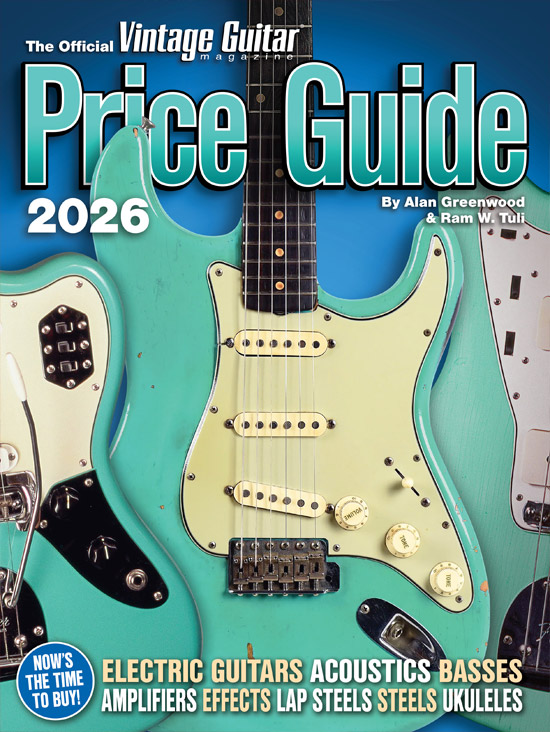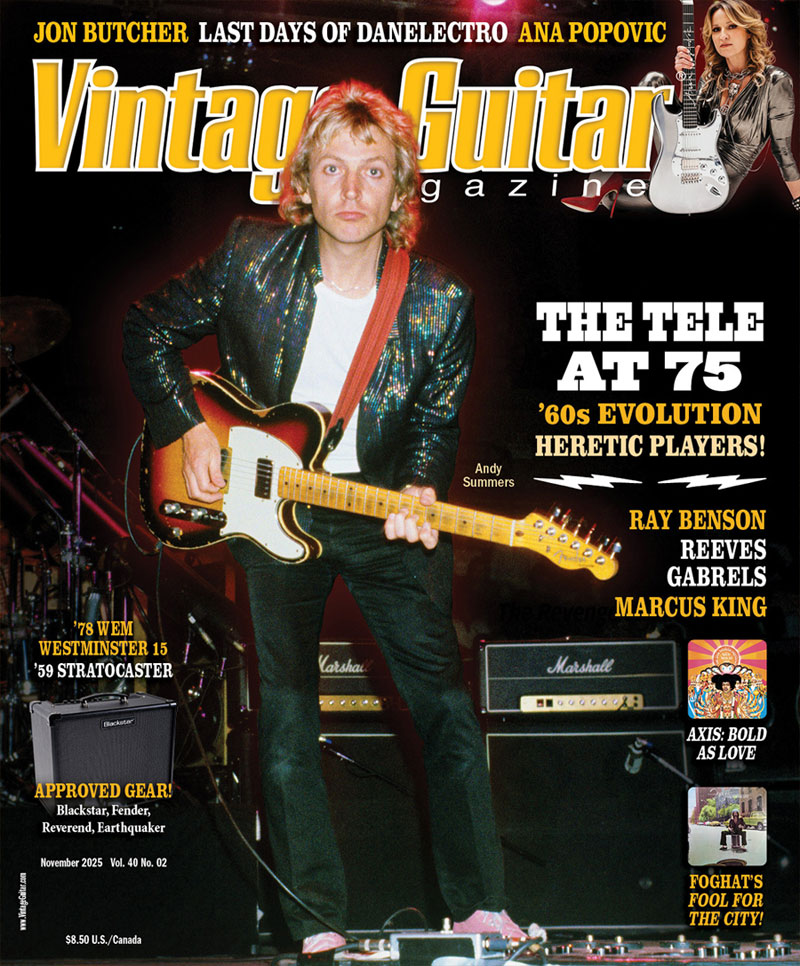An educated guess would be it was built for a Fender worker allowed to gather leftover components from out-of-production amps. That’s pure speculation, of course, but it would make sense of finding a 1956 chassis with ’61 components stuffed into a mismatched cabinet that had never been drilled for its correct chassis. Find what you can, make the best fit of it, put it all together, and it’s yours! Note, too, the masking tape inside indicates a soldering job by Lily, who was a noted Fender assembler of the day. So, it really does appear to have been put together in the Fullerton factory and not by some scavenging employee who smuggled components out, like Johnny Cash’s fabled Cadillac. But again, who can say? Someone, hopefully – and please let us know if you have any clues, sources, or more likely speculations to propose.
“When I purchased the amp, I was told it was made at the Fender factory in the early ’60s, using a leftover tweed chassis, cabinet, and the Fender parts of the day,” Stamps said. “I’m quite sure it was made at Fender in ’61, but I can’t prove it. However, the chassis and cabinet have factory inspection marks, factory wire routing, and so forth. Also, the transformers, caps, resistors, date codes, etc. are what you’d find in a ’61 Deluxe. Viewed next to any other 5E3 chassis, it looks exactly the same.”


And not just exactly the same, but superbly clean and original, too. From the bright-yellow Astron signal capacitors to the shiny brown Minimite filter caps, to the crisp, chocolatey carbon-comp resistors, it’s all astoundingly pristine. The cab is, of course, more compact than that of a standard late-’50s Deluxe, so the 12″ speaker is a bit of a squeeze in there, where the Vibrolux’s 10″ Jensen would have been (the speaker Stamps received with it, a ’62 Oxford 12M6, wouldn’t have been original to the amp).
When fired up, Stamps reports, the amp “has the typical big bottom-end that old Deluxes are known for, but the treble side of things seems to extend to a higher frequency than other 5E3 amps I’ve played. It sounds best when it’s clean or just at the edge of breaking up. When cranked to full distortion, it’s kind of raw and ratty-sounding. The amp has a nice dynamic touch response with the extra little bit of presence; notes seem to leap off the strings. And it seems to like single-coil pickups better with humbuckers.”
In other words, another great tweed Deluxe!
If you have any insight on how this one came about, don’t hesitate to send a note to vguitar@vintageguitar.com.

This article originally appeared in VG April 2016 issue. All copyrights are by the author and Vintage Guitar magazine. Unauthorized replication or use is strictly prohibited.



